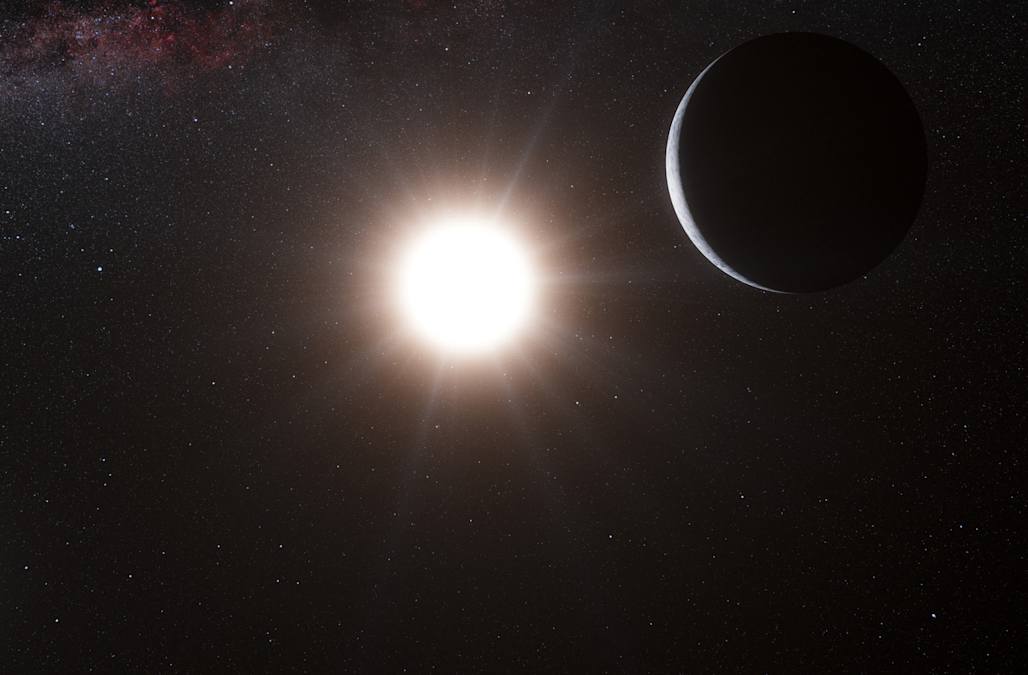Could We Predict Alien Life? New Discoveries Suggest Non-Xenomorph Species On Earth

Table of Contents
Redefining Life: Beyond Carbon-Based Organisms
The Limits of Our Current Understanding
Our search for extraterrestrial life has been significantly hampered by an anthropocentric bias. We tend to assume that alien life will be carbon-based, requiring liquid water to survive, and sharing similar biological processes to life on Earth. This assumption, however, might be severely limiting.
- Examples of unusual extremophiles on Earth: Many extremophiles, organisms thriving in extreme environments, challenge our assumptions. These include organisms that survive in boiling hot springs, highly acidic environments, or under immense pressure deep in the ocean. Their existence demonstrates the potential for life to flourish under conditions previously thought uninhabitable.
- Silicon-based life: Silicon, located next to carbon on the periodic table, is another potential building block for life. Although silicon-based life remains theoretical, its chemical properties suggest it could potentially support complex biological structures.
- Alternative biochemistries: It's entirely possible that alien life could utilize completely different biochemistries, perhaps based on alternative solvents or even different elements altogether. This expands the possibilities dramatically, making the search for extraterrestrial life far more complex and exciting.
Expanding the Search Parameters
Considering the potential for life forms vastly different from our own necessitates expanding our search parameters beyond Earth-like environments.
- Examples of extreme environments: The discovery of extremophiles in extreme environments like deep-sea hydrothermal vents, acidic lakes, and subglacial lakes in Antarctica shows that life can thrive in incredibly diverse and challenging conditions on Earth.
- Life beyond Earth: The search for extraterrestrial life must extend beyond our planet. Subsurface oceans on icy moons like Europa and Enceladus are considered promising locations for potential alien life, where liquid water might exist despite the extreme cold. Exploring these environments will require innovative technologies and approaches to life detection.
New Discoveries Suggesting Non-Xenomorph Species on Earth
Extremophiles as Analogues for Alien Life
Extremophiles serve as invaluable analogues for alien life. Their remarkable adaptations to extreme conditions offer insights into the resilience and adaptability of life.
- Specific examples: Tardigrades, known for their ability to survive extreme radiation and dehydration, are a prime example. Various extremophile bacteria have been found thriving in conditions previously considered lifeless, showcasing the potential for life in seemingly inhospitable environments.
- Informing the search for alien life: Studying extremophiles allows scientists to develop more effective methods for detecting life beyond Earth. Understanding their metabolic processes, genetic makeup, and survival strategies can help us identify potential biosignatures on other planets.
The Potential for Unexpected Biosignatures
Detecting life beyond our current understanding requires a re-evaluation of what constitutes a biosignature. Traditional methods might miss life forms with vastly different biochemistries.
- Types of biosignatures: Instead of solely focusing on oxygen or organic molecules, we need to explore a wider range of potential biosignatures. Metabolic byproducts, unusual isotopic ratios, and even unusual patterns of energy consumption could all be indicators of extraterrestrial life.
- New detection technologies: Developing new technologies and analytical techniques for detecting these unconventional biosignatures is crucial. Advanced spectroscopic methods, for example, could help us identify subtle chemical imbalances indicative of biological activity.
Predicting Alien Life: Challenges and Opportunities
The Difficulty of Prediction
Predicting the form and function of alien life is inherently challenging. The vastness of the universe and the myriad of possible planetary conditions make finding exact Earth-like duplicates highly improbable.
- Unknown factors: Numerous unknown factors could significantly influence the evolution of life on other planets. Variations in atmospheric composition, gravity, radiation levels, and the presence of specific elements could lead to drastically different life forms.
- Interstellar travel and communication: Even if we discover evidence of alien life, interstellar travel and communication pose significant technological hurdles. The vast distances involved make direct contact extremely difficult.
The Role of Astrobiology in Prediction
Astrobiology plays a critical role in advancing our understanding of life's potential diversity. By combining various disciplines, it helps us refine our search for extraterrestrial life.
- Areas of research: Exoplanet research, focused on identifying potentially habitable planets, is crucial. The search for biosignatures in planetary atmospheres and surface materials is another key area of focus.
- Technological advancements: Advancements in telescopes, space probes, and life detection technologies will be critical in the future search for alien life. More sensitive instruments and sophisticated analytical techniques are needed to detect the faint signals of life across vast interstellar distances.
Conclusion
In conclusion, predicting alien life is a complex undertaking. The potential for non-xenomorph species highlights the limitations of our anthropocentric assumptions. Extremophiles on Earth offer invaluable clues, demonstrating the incredible adaptability of life. By expanding our search parameters, developing new detection technologies, and embracing the interdisciplinary nature of astrobiology, we can significantly improve our chances of discovering extraterrestrial life. Learn more about the fascinating quest for alien life and explore the possibilities of extraterrestrial life beyond our current understanding. Discover the exciting field of astrobiology and contribute to the search for non-xenomorph species. The discovery of alien life would fundamentally reshape our understanding of the universe and our place within it.

Featured Posts
-
 Trumps Positive Outlook On Iran Deal After Encouraging Negotiations
May 27, 2025
Trumps Positive Outlook On Iran Deal After Encouraging Negotiations
May 27, 2025 -
 Global Travel Slowdown Use Your Loyalty Points Now
May 27, 2025
Global Travel Slowdown Use Your Loyalty Points Now
May 27, 2025 -
 The Us To Unseal Key Documents Related To The Assassinations Of Jfk Rfk And Mlk
May 27, 2025
The Us To Unseal Key Documents Related To The Assassinations Of Jfk Rfk And Mlk
May 27, 2025 -
 Renee Rapps Video A Conversation About Representation And Sexuality
May 27, 2025
Renee Rapps Video A Conversation About Representation And Sexuality
May 27, 2025 -
 Furnizimi I Armeve Nga Gjermania Ne Ukraine Implikimet Dhe Pasojat
May 27, 2025
Furnizimi I Armeve Nga Gjermania Ne Ukraine Implikimet Dhe Pasojat
May 27, 2025
Latest Posts
-
 Television Sabado 10 De Mayo Lo Que No Te Puedes Perder
May 30, 2025
Television Sabado 10 De Mayo Lo Que No Te Puedes Perder
May 30, 2025 -
 Guia De Programacion De Tv Sabado 10 De Mayo
May 30, 2025
Guia De Programacion De Tv Sabado 10 De Mayo
May 30, 2025 -
 Savvato 10 5 Plires Programma Tileoptikon Metadoseon
May 30, 2025
Savvato 10 5 Plires Programma Tileoptikon Metadoseon
May 30, 2025 -
 Plires Programma Tileoptikon Metadoseon Gia Tin Kyriaki 11 Maioy
May 30, 2025
Plires Programma Tileoptikon Metadoseon Gia Tin Kyriaki 11 Maioy
May 30, 2025 -
 Kalyteres Tileoptikes Ekpompes Savvatoy 10 5
May 30, 2025
Kalyteres Tileoptikes Ekpompes Savvatoy 10 5
May 30, 2025
